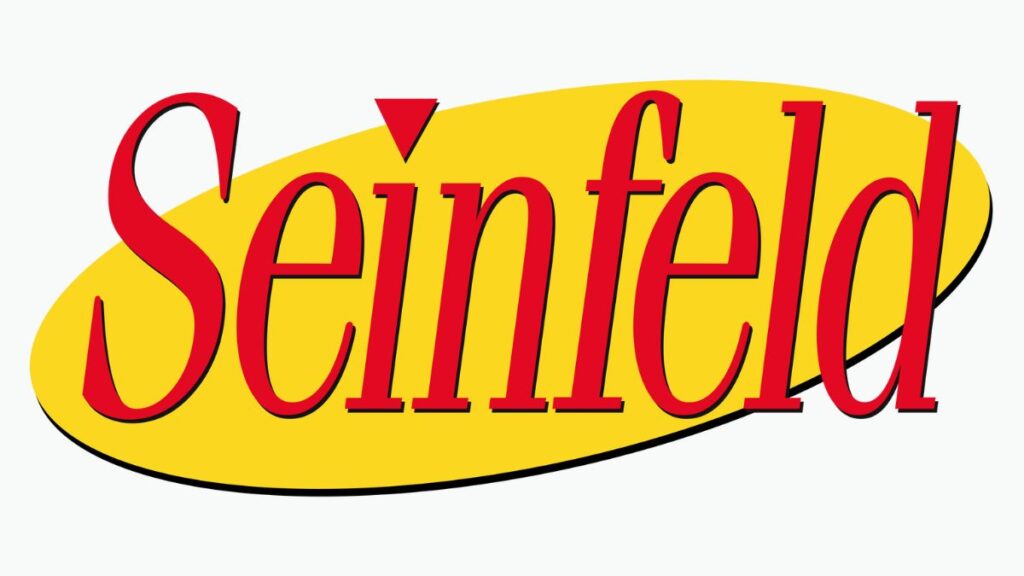By Brian Boone
One summer evening 35 years ago, on the day after a holiday when not many people were even watching TV, NBC quietly aired a comedy special. Somehow, it evolved into one of the most popular, acclaimed, and influential TV shows of all time. Here’s the deal with Seinfeld.
For more fun facts and pop culture, check out Uncle John's Action-Packed Bathroom Reader
Jerry Seinfeld and Larry David had been working in comedy since the late 1970s to moderate success. Seinfeld was a club comic who briefly co-starred on the sitcom Benson while David was a cast member on the sketch comedy show Fridays, ABC’s clone of Saturday Night Live. (David would later write for SNL, but would get just two sketches on the air during his one season at the late-night program.) They met at a birthday party for stand-up and mutual friend Carol Leifer. David wrote some jokes for her to tell guests, but when she got too drunk to perform, Seinfeld read David’s jokes. They got along and found they had a similar comic sensibility—particularly an obsession with the minutia and arbitrary routines of everyday life.
In the 1980s, NBC aired SNL most Saturday nights, but saved one monthly 90-minute slot for alternative programs, like wrestling and comedy specials. In 1989, NBC commissioned a variety and comedy special from Seinfeld and David, who’d become the comic’s writing partner. Rather than write a 90-minute collection of sketches, they wrote a 30-minute pilot episode of a sitcom. They felt that their idea—a small group of neurotic narcissists complaining about the little things in life, or a show “about nothing” as they pitched it—worked better in the shorter, punchier, 30-minute format.
Seinfeld and David called the show, in which Seinfeld played a fictionalized version of himself, a stand-up comedian living in New York going through the motions with his weird friends, StandUp. Then they changed their minds and called it Good News, Bad News. Then they retitled it some more, briefly going with The Jerry Seinfeld Show and ultimately settling on The Seinfeld Chronicles. The special aired not in late night but in primetime, on July 5, 1989.
Most of the Seinfeld ingredients were present in The Seinfeld Chronicles, but not quite. The character of Elaine didn’t exist yet; Jerry and his fussy friend George (a real estate agent, not yet a perpetual job-hopper) interact with a waitress at their hangout diner Pete’s (not yet Monk’s) named Claire. A wacky neighbor character is there, and he’s played by David’s Fridays castmate Michael Richards, except he’s named Kessler. He’d be renamed Kramer, David’s intent, because he was inspired by his real-life neighbor Kenny Kramer. NBC forced the name change because they were worried the real Kramer might sue.
Ratings for The Seinfeld Chronicles were terrible, and that, coupled with an abysmal reaction from test audiences, dissuaded NBC from turning the show into a full series. But one NBC executive, Rick Ludwin, thought there was something there, and nearly a year after rejecting The Seinfeld Chronicles, commissioned four episodes—the smallest order in television history. Retitled Seinfeld, to reduce confusion with the short-lived, little-liked ABC teen comedy The Marshall Chronicles, this time the show hit big earning blockbuster ratings the summer of 1990.
The main difference between The Seinfeld Chronicles and Seinfeld proper: the addition of Jerry’s sometime-girlfriend Elaine, portrayed by David’s SNL colleague Julia Louis-Dreyfuss. Taking things full circle, the character was inspired by David and Seinfeld’s friend Carol Leifer. There’s a subtle reference to The Seinfeld Chronicles in the finale episode of Seinfeld, nine years later. Jerry and George have a mundane conversation about a shirt button—they’re off and running on their “show about nothing.” When they sit in jail at the end, they repeat it. And Jerry says “it feels like we’ve had this conversation before.
After Seinfeld ended its nine-season run in 1998—as the #1 show on TV, and with Seinfeld turning down tens of millions to come back for one more year—the eponymous star returned to the stand-up circuit and made occasional films, including Bee Movie and Comedian. The true breakout star of Seinfeld was the true voice of Seinfeld: David. In 2000, he co-created, lead the writing of, and starred on the HBO series Curb Your Enthusiasm. In the Seinfeld vein, David played “Larry David,” the wealthy co-creator of Seinfeld, living and working in Los Angeles and getting hung up on the minutia of life and alienating almost everyone he met with his obnoxious behavior, self-important attitude, and constant, hapless moves toward making things right with the universe.
The semi-improvised Curb Your Enthusiasm ran for 12 seasons, off and on between 2000 and 2024, racking up more than 40 Emmy Award nominations along the way, mostly for David’s acting and writing. He used the show to avenge Seinfeld’s legacy on more than one occasion. After the poorly-received Seinfeld finale in 1998, Curb Your Enthusiasm’s 2009 season centered around a fictional reunion of the beloved NBC series—which David only undertakes as a wild shot to win back his estranged wife. The final season of Curb Your Enthusiasm, airing in 2024, closely mirrored the series finale of Seinfeld, too, with David’s character facing trumped-up criminal charges. The final episode of the series is a virtual re-creation of the last Seinfeld—even Jerry Seinfeld shows up as a character witness to support his so unlikeable-he’s-likeable friend.
Craving serenity now? Can’t think of a good Festivus gift for that special someone whose name you can’t remember? Well, we think Uncle John’s Bathroom Reader is pretty, pretty, pretty…good.









